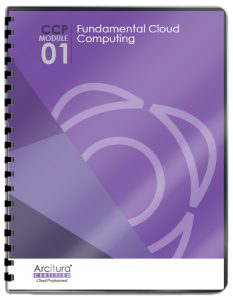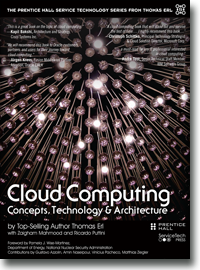Cloud Computing Patterns, Mechanisms > Basics > Origins and Influences > A Brief History
A Brief History
The idea of computing in a “cloud” traces back to the origins of utility computing, a concept that computer scientist John McCarthy publicly proposed in 1961:
“If computers of the kind I have advocated become the computers of the future, then computing may someday be organized as a public utility just as the telephone system is a public utility… The computer utility could become the basis of a new and important industry.”
In 1969, Leonard Kleinrock, a chief scientist of the Advanced Research Projects Agency Network or ARPANET project that seeded the Internet, stated:
“As of now, computer networks are still in their infancy, but as they grow up and become sophisticated, we will probably see the spread of ‘computer utilities’ …”.
The general public has been leveraging forms of Internet-based computer utilities since the mid-1990s through various incarnations of search engines (Yahoo!, Google), e-mail services (Hotmail, Gmail), open publishing platforms (MySpace, Facebook, YouTube), and other types of social media (Twitter, LinkedIn). Though consumer-centric, these services popularized and validated core concepts that form the basis of modern-day cloud computing.
In the late 1990s, Salesforce.com pioneered the notion of bringing remotely provisioned services into the enterprise. In 2002, Amazon.com launched the Amazon Web Services (AWS) platform, a suite of enterprise-oriented services that provide remotely provisioned storage, computing resources, and business functionality.
A slightly different evocation of the term “Network Cloud” or “Cloud” was introduced in the early 1990s throughout the networking industry. It referred to an abstraction layer derived in the delivery methods of data across heterogeneous public and semi-public networks that were primarily packet-switched, although cellular networks used the “Cloud” term as well. The networking method at this point supported the transmission of data from one end-point (local network) to the “Cloud” (wide area network) and then further decomposed to another intended end-point. This is relevant, as the networking industry still references the use of this term, and is considered an early adopter of the concepts that underlie utility computing.
It wasn’t until 2006 that the term “cloud computing” emerged in the commercial arena. It was during this time that Amazon launched its Elastic Compute Cloud (EC2) services that enabled organizations to “lease” computing capacity and processing power to run their enterprise applications. Google Apps also began providing browser-based enterprise applications in the same year, and three years later, the Google App Engine became another historic milestone.
Definitions
A Gartner report listing cloud computing at the top of its strategic technology areas further reaffirmed its prominence as an industry trend by announcing its formal definition as:
“…a style of computing in which scalable and elastic IT-enabled capabilities are delivered as a service to external customers using Internet technologies.”
This is a slight revision of Gartner’s original definition from 2008, in which “massively scalable” was used instead of “scalable and elastic.” This acknowledges the importance of scalability in relation to the ability to scale vertically and not just to enormous proportions.
Forrester Research provided its own definition of cloud computing as:
“…a standardized IT capability (services, software, or infrastructure) delivered via Internet technologies in a pay-per-use, self-service way.”
The definition that received industry-wide acceptance was composed by the National Institute of Standards and Technology (NIST). NIST published its original definition back in 2009, followed by a revised version after further review and industry input that was published in September of 2011:
“Cloud computing is a model for enabling ubiquitous, convenient, on-demand network access to a shared pool of configurable computing resources (e.g., networks, servers, storage, applications, and services) that can be rapidly provisioned and released with minimal management effort or service provider interaction. This cloud model is composed of five essential characteristics, three service models, and four deployment models.”
This book provides a more concise definition:
“Cloud computing is a specialized form of distributed computing that introduces utilization models for remotely provisioning scalable and measured resources.”
This simplified definition is in line with all of the preceding definition variations that were put forth by other organizations within the cloud computing industry. The characteristics, service models, and deployment models referenced in the NIST definition are further covered.

